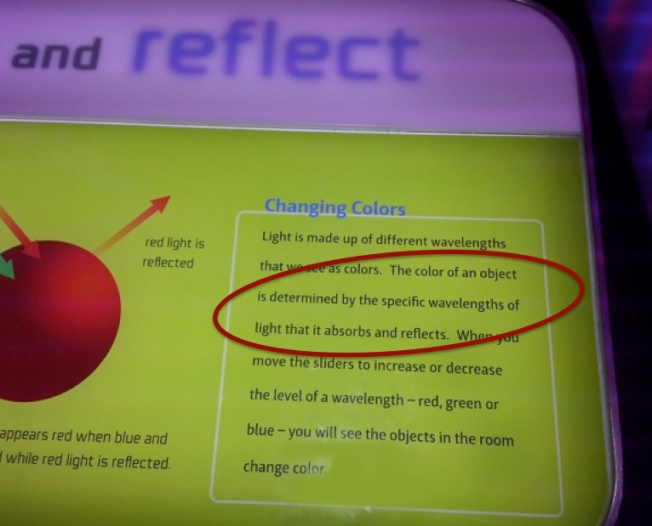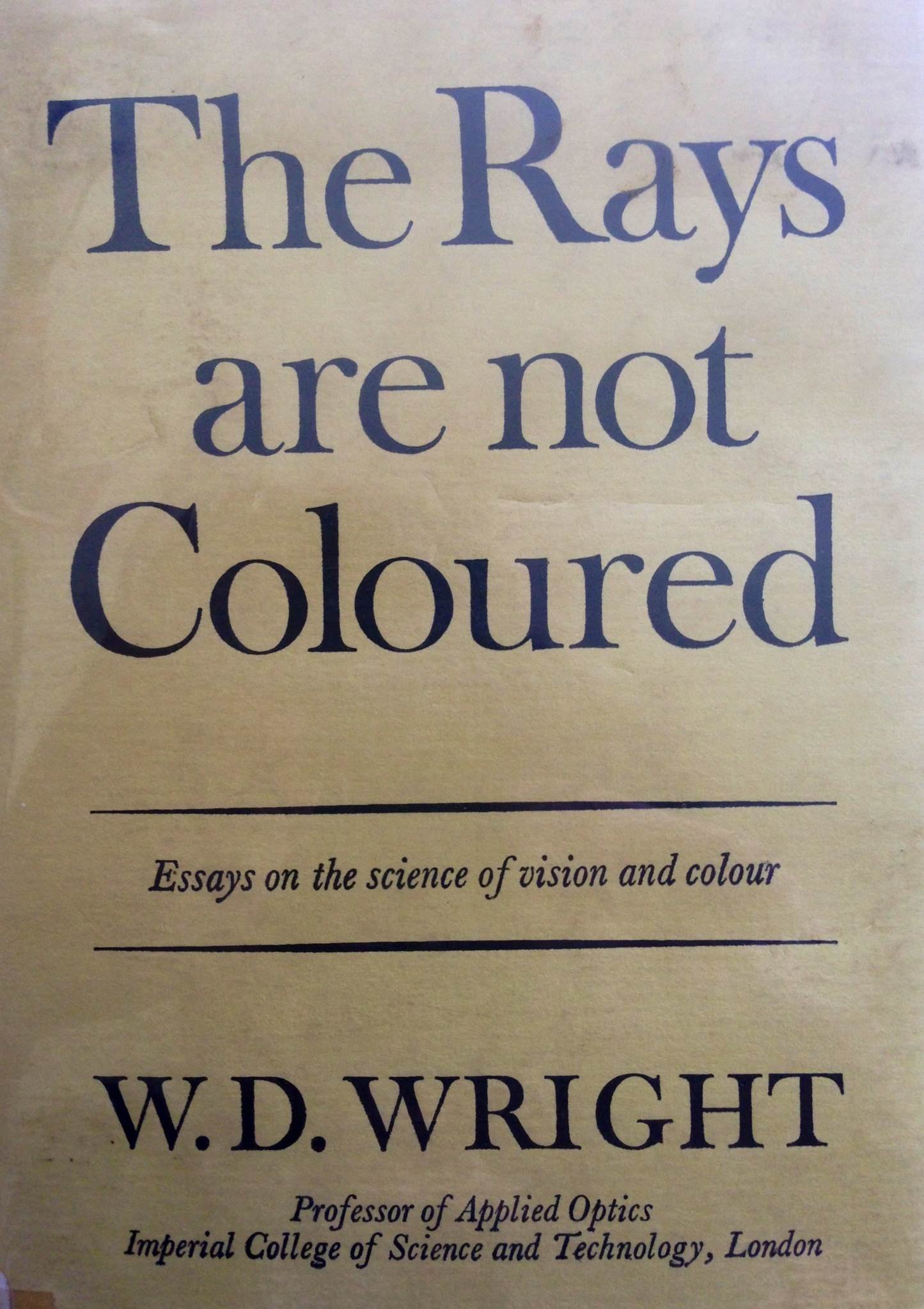Museum of Science and Industry, Chicago: Crítica

According to the Chicago Museum of Science and Industry, “the color of an object is determined by its specific absorption and reflection wavelengths,” but this is not true. This erroneous definition is presented in the “Color Booth” which is part of the “Science Storms” Exhibition. Here are some explanations for why color is not exclusively determined by the specific wavelengths that an object absorbs and reflects:
“Many people believe that color is an essential property of objects and that it depends entirely on the specific wavelengths of reflected light. But this belief is wrong. Color is a sensation created in the brain. If the colors we perceive depended solely on the reflected wavelength, the color of an object would change drastically according to variations in lighting and shadow that occurred constantly throughout time. Quite the contrary, the color of an object seems to us relatively stable due to our neural activity – despite constant changes in the environment ” por John Werner, Ph.D.: UC Davis, Center for Neuroscience.
“The color of an isolated light is closely related to the physical properties of light, but this fact is quite misleading for understanding color under normal conditions. Color is not in the light. What we see depends directly on a pattern of neural responses, and the wavelength or energy of light entering the eye is just one factor among many others. The direct relationship between a physical stimulus and how we perceive it is broken when light is part of a complex scene. In normal viewing, the neural response to a particular light, and therefore our perception of it, is influenced by the context of the other lights present in the same scene.” by Steve Shevell, Ph.D.: University of Chicago, Institute of Mind and Biology.
“Color is often thought of as a quality of light, but that’s not true. For example, the expression “the ocean is blue” uses a perception experience of the color blue to describe physical light. The color itself is not in the light. Color is a perceptual phenomenon determined by neuronal processes. The region of the electromagnetic spectrum that is visible to humans is around 400 nm to 700 nm wavelength, but this is not endowed with a color. A certain wavelength, for example close to 470 nm or 580 nm, is perceived as blue or yellow, respectively, because these wavelengths stimulate photoreceptors in the human eye that are responsible for transducing physical light into neural responses, that is, electrical impulses. These neural responses go through a series of processing steps in the brain. The experience of blue or yellow, like all other colors, is a mental construct. The experience of a color is like understanding language. There is no sense in the physical sound of a Japanese sentence (the brain must interpret it) if the person has not learned the language just as there is no blue or yellow in the wavelengths. Color is a perception that human beings are able to experience through sensory neural processes” by Claudia Feitosa-Santana, Ph.D.: Roosevelt University, Department of Psychology.
This knowledge is very old:
Isaac Newton (1642, 1727) brilhantemente escreveu em seu livro “Opticks“, first published in 1704: “And if at some point I speak of light and rays as colored or endowed with colours, I would like to be understood as not speaking philosophically and correctly, but roughly – such conceptions would only be attributed by lay people when observing these experiments. To speak correctly, the rays are not colored. In them there is nothing but a certain power and disposition to generate the sensation of this or that color.”
More than 200 years later, WD Wright was inspired by Newton’s words and published a book called “Spokes Are Not Colored” in 1967, stating that “our perception of color is within us and colors cannot exist unless that there is an observer to perceive them. Color does not even exist in the chain of events between the retinal receptors and the visual cortex, but only when the information is finally interpreted in the observer’s consciousness. W. D. Wright, do Imperial College of Science and Technology, London

So, if you go to the “Museum of Science and Industry” anxious to get your kids to learn science, it’s best to lower your expectations a lot. It can be fun, but not educational. Most of the time, you won’t find an employee or volunteer to answer a scientific question, and if you do, it doesn’t mean they will give you the correct answer.
Your uniforms deceive us. They have two types: employees who 99% are not scientists but wear a uniform that says “Scientist”; the volunteers wear a uniform that says “Volunteer” and most of them are retired from various non-science related fields, but the chance of finding a science student among them, however small, is still greater than among employees.
More alarming and much more frightening is the fact that they offer a “Teacher’s Workshop” and a “Center for the Advancement of Science in Education”. In his own words, the “Teacher’s Workshop is designed to increase your knowledge of science, improve teaching, teaching ability, and demonstrate how to use museum programs and exhibits to improve the science curriculum.” This center offers a huge list of activities such as excursions, children’s science curriculum, learning lab, etc. It would be great if the museum were taking science seriously, but that is definitely not the case.
NOTE: Before writing this comment, I contacted the museum requesting that the panel should be corrected. The answer was no and the explanation was, once again, proof that the “Museum of Science and Industry”, also called MSI Chicago, does not have a sufficient minimum number of scientists and/or no respect for science. Unfortunate.

